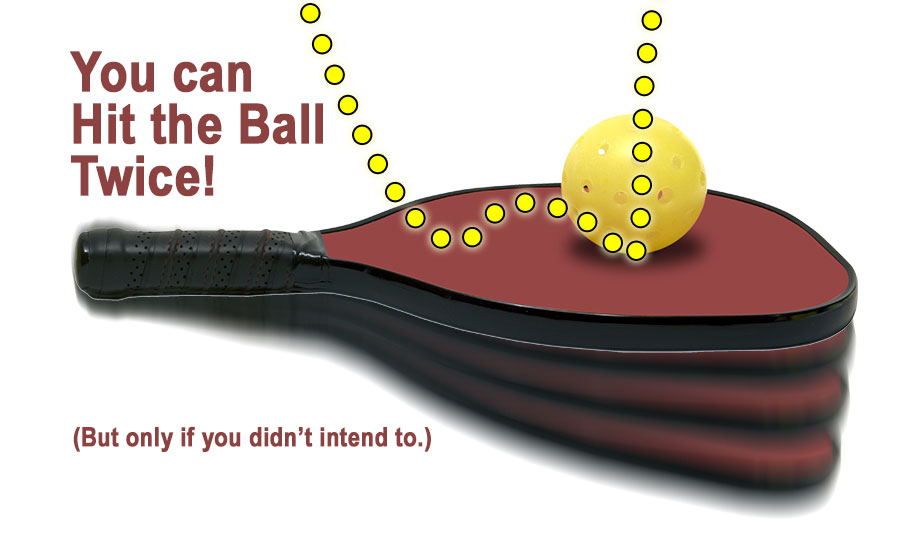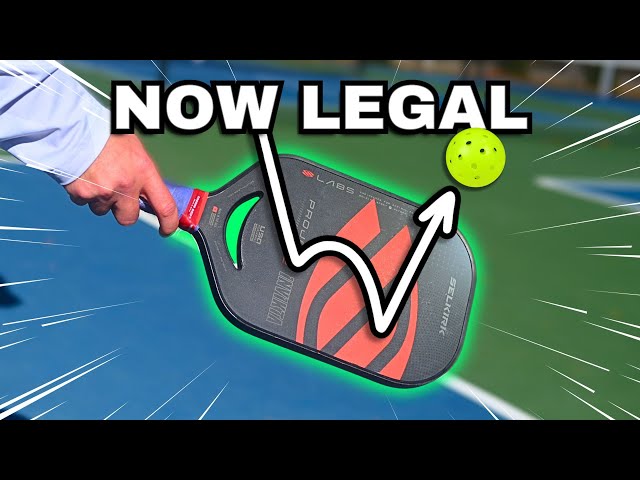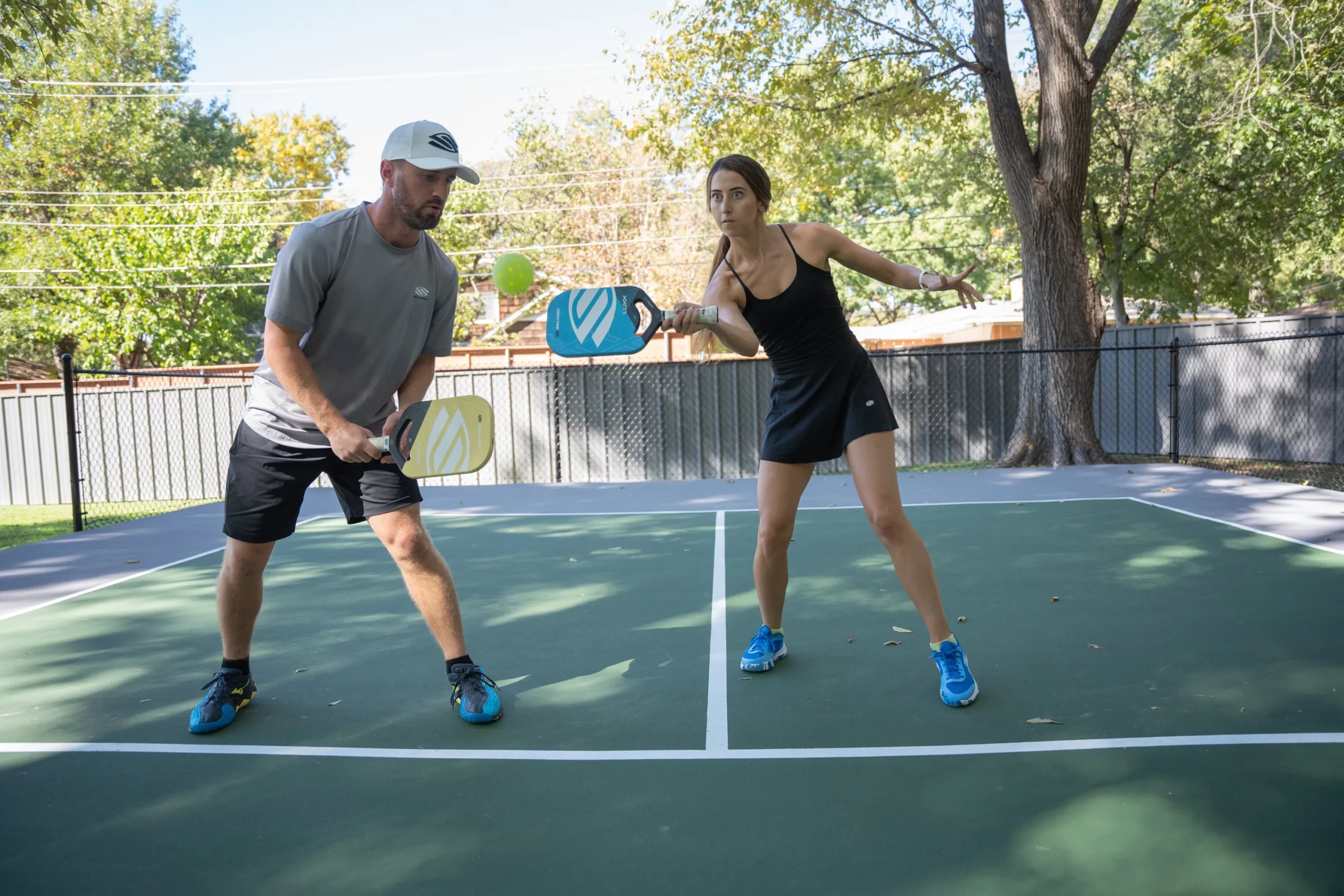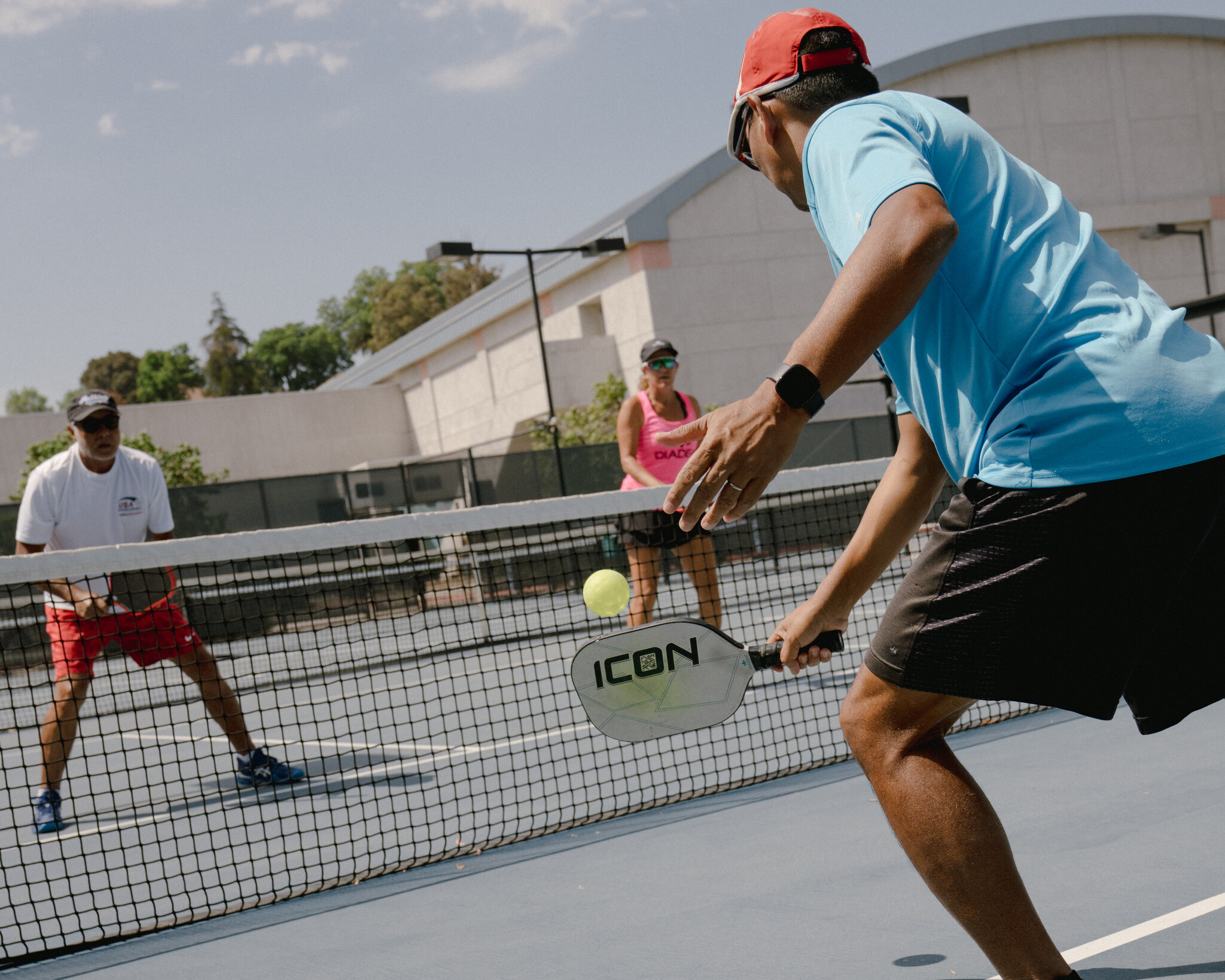Can You Double Hit in Pickleball?
If you are a pickleball enthusiast or a newcomer to the sport, you may have encountered discussions about “double hits.” This term can evoke confusion, especially among players still learning the intricacies of the game. In pickleball, understanding the nuances surrounding double hits is essential not only for following the rules but also for enhancing performance on the court. A double hit occurs when the ball strikes the paddle twice during a single stroke, and whether this action is penalized often depends on the nature of the hit itself. This article will delve into the double hit rules in pickleball, explore what constitutes a legal or illegal double hit, discuss its implications in gameplay, and provide strategies to avoid such occurrences. By gaining a clearer understanding of this aspect of the game, players can elevate their skills and enjoy pickleball even more.

Understanding Double Hit Rules in Pickleball
Pickleball players frequently grapple with the concept of “double hit.” The term itself can spark confusion, as it may seem straightforward at first glance. However, the execution of a double hit can vary based on specific conditions established by the regulations of the game. According to the rules set forth by USA Pickleball, a double hit can occur, but it must meet certain criteria to be considered legal. This distinction is crucial for both casual and competitive players, as it can significantly influence gameplay and strategies.

Definition of Double Hit
Simply put, a double hit occurs when a player strikes the ball twice with their paddle during a single, continuous stroke. According to the official pickleball rules, for a double hit to be deemed legal, it must happen during a unintentional, continuous, single-direction stroke by one player. The emphasis here is on the stroke’s continuity; if a player interrupts their motion or modifies the direction of the swing, the hit is considered illegal. Such nuances are essentially the essence of executing a double hit accurately in the realm of pickleball.
When a player attempts to connect with the ball but it inadvertently strikes multiple areas of the paddle (e.g., the edge and the face) in what appears to be a continuous motion, it can be classified as a legal double hit. The key requirement is that the stroke must maintain its fluidity without any abrupt changes. On the other hand, if the action involves adjusting the swing mid-contact, it is categorized as an unintentional fault, thus rendering the hit illegal. Understanding this definition is essential for players to refine their techniques and avoid unnecessary penalties during matches.
Legal vs. Illegal Double Hits
- Legal Double Hits:
- A double hit becomes legal when it results from a continuous, unintentional stroke. This rule applies uniformly to various types of shots serves, volleys, and groundstrokes. An example of a legal double hit could be a player making a downward swing; if the ball unexpectedly strikes the paddle more than once in one motion, it is considered permissible.
- The smooth and uninterrupted nature of the stroke is the critical factor ensuring it is legal. Players can explore riskier serves and volleys under the allowance that a double hit may not always skew the outcome negatively.
- Illegal Double Hits:
- Conversely, any double hit deemed intentional or having alterations in swing direction is ruled illegal. This could occur during a scenario where a player attempts a volley and abruptly shifts angles mid-swing, resulting in the ball striking multiple sections of the paddle incorrectly. Furthermore, any strokes involving the ball being hit by more than one player will also result in a fault.
- Understanding this dynamic between legal and illegal double hits is instrumental for players aiming to enhance their strategy while engaging with their opponents.
Implications of Double Hits in Gameplay
Understanding the implications of double hits within the context of gameplay is critical for crafting strategies and tactics. When players recognize the nature of double hits, they can adapt their approach depending on the circumstances and the rules governing the game.
Players who are attuned to the possibility of legal double hits may be more inclined to take risks with their shots, focusing on the fluidity of their strokes to ensure they maintain legality in their hits. This understanding can foster a dynamic playing style that encourages creativity and spontaneity, as players learn when to push the boundaries while remaining compliant with the rules.
Conversely, awareness of the potential pitfalls of illegal double hits can steer players toward improving their form and technique. Through dedicated practice and attention to stroke continuity, players can minimize the risk of executing illegal double hits, thus enhancing their overall performance. The consequences of a double hit can quickly impact the match outcome, as frequent faults can lead to losses in points, thereby escalating the stakes during tense moments of play.
Overall, the implications of double hits extend beyond mere adherence to rules; they significantly influence player confidence, shot selection, and the types of risks players are willing to take during a match.
Rules Governing Double Hits
The rules governing double hits in pickleball are outlined explicitly in the USA Pickleball Official Rulebook, particularly under Rule #11.A. This rule specifies that hitting the ball twice is permissible if done in a continuous, unintentional motion by one player. However, players must be vigilant about maintaining the integrity of their stroke mechanics.

- Rule Specification: A player may execute a continuous, fluid stroke where a double hit occurs as part of the hitting process. This implies a relaxed and confident swing, thereby enabling a player to react effectively while managing the ball’s trajectory.
- Misinterpretation as Carrying: One common misconception that players face relates to confusing double hits with “carrying” the ball. Carrying occurs when the ball remains on the paddle longer than intended, and it is always deemed illegal in the sport. Proper distinction between these two infractions is important for maintaining fair play.
It becomes imperative for players to familiarize themselves with these rules and seek continual improvement in their stroke execution to minimize errors related to double hits.
Official Rules from USA Pickleball
The official rules from USA Pickleball serve as a roadmap for players navigating the complexities of the game. Reinforcing their understanding of Rule #11.A and its stipulations about double hits can help players enhance their skills and ensure they are playing within the regulatory framework.
The rules stipulate that unintentional double hits resulting from a smooth and fluid stroke are permissible. Players are encouraged to delve deeper into the intricacies of the rules, observing how they can maintain compliance while engaging effectively during matches. An awareness of the rules cultivates not just better players but also promotes a culture of fairness and respect among participants.
Examples of Double Hit Scenarios
Examples of double hits can help clarify the differences between legal and illegal instances on the court. Here are a few common scenarios that illustrate these nuances:
- Single Player Double Hit: A player accidentally strikes the ball twice with the same side of their paddle during a single stroke. For instance, while performing a volley, a swift swing may cause the ball to brush consecutively against the paddle.
- Striking Different Paddle Sections: If a player swings the paddle and contacts the ball in two distinct areas (like the paddle face and the edge) while maintaining a continuous stroke, this can be considered a legal double hit.
- Deflected Shot: Unintentionally deflecting the ball off the paddle and then making another contact during the same stroke can count as a legal double hit.
- Accidental Groundstroke: In a scenario where a player makes a groundstroke and the ball touches both the tip of the paddle and the face in one smooth motion, it is legal.
Understanding these examples allows players to refine their approach when faced with challenging shots, ensuring that legally managing double hits becomes a part of their game strategy rather than an obstacle.
Common Misconceptions About Double Hits
- All Double Hits are Faults: A prevalent misconception within pickleball is that any instance of hitting the ball twice results in a fault. However, double hits can be legal when executed as part of a single continuous stroke made by one player.
- Deliberate Double Hits: Some players may mistakenly believe that they can intentionally strike the ball twice for tactical plays. This is incorrect; the rules clearly state that double hits must stem from unintentional actions, resulting in penalties for deliberate attempts.
- Multiple Players Involvement: Another misunderstanding is the belief that double hits can involve more than one player. Legally, a valid double hit must happen solely between one player; any instance involving two players touching the ball without prior intention will classify as a fault.
- Confusion with Carrying: Players may confuse double hits with “carrying,” which is illegal regardless of intent. Clarifying this distinction aids in understanding the framework of permissible play.
By addressing these misconceptions, players can develop a more nuanced understanding of double hits, facilitating a more enjoyable and compliant experience during gameplay.
Consequences of Double Hits
Double hits can incur several consequences that affect both the trajectory of the game and the players involved. Understanding these repercussions is vital for players seeking to refine their strategies and maintain competitive integrity.

Faults Resulting from Double Hits
In pickleball, double hits are classified as faults unless they adhere to the outlined conditions of being unintentional and continuous. When a double hit is ruled as a fault, the outcome is immediate; the point is awarded to the opposing team. The impact varies depending on whether the fault occurs on the serving or receiving side.
For example:
- Serving Team’s Fault: A double hit committed by the serving team results in the loss of the serve, handing the advantage to the opponent.
- Receiving Team’s Fault: Conversely, if the receiving team commits the fault, the serving side is awarded a point.
This discrepancy in consequences emphasizes the importance of player responsibility and technique in avoiding costly errors during matches.
Impact on Match Outcomes
The ramifications of double hits extend significantly to match outcomes. The cumulative effect of frequent double hits can hinder a player’s scoring capacity and the overall performance of a team. Frequent faults often lead to a loss of momentum, and players can find themselves under increased pressure as games progress.
Moreover, strategic understanding of the game is crucial; players who grasp when double hits may occur can adjust their play accordingly. Recognizing how to manage legal double hits can lend a tactical edge, allowing for more engaging and dynamic gameplay.
Players need to acknowledge the consequences of their actions on the court, ensuring they analyze their technique and strive to minimize any faults that can impact their score. Adhering to the rules while refining skills leads not only to improved personal performance but also heightens the overall excitement and competitiveness of matches.
Clarifying Player Responsibilities
Seasoned players understand the importance of being accountable for their gameplay. This holds particularly true regarding double hits. During informal games without official referees, players shoulder the responsibility of self-monitoring their actions. Should a player believe they have executed a double hit, they should promptly call it themselves to uphold the integrity of the game.
In team scenarios, clear communication is essential for preventing instances where multiple participants may clash when attempting to hit the ball. Players must remain vigilant and observant of each other’s movements while maintaining effective communication to minimize overlapping attempts.
Additionally, refining technique and stroke records can empower players to navigate their play more successfully. Developing a keen awareness of how contacts occur during swings will aid players in avoiding double hits.
Ultimately, cultivating an environment of accountability during matches enhances not only one’s game performance but also the camaraderie and spirit of the sport.
Strategies to Avoid Double Hits
Given the implications of double hits on gameplay and match outcomes, implementing effective strategies to minimize their occurrence is paramount. By focusing on several vital areas, players can refine their techniques and enjoy greater success during their games.

Techniques for Better Ball Control
Improving ball control is fundamental to avoiding double hits in pickleball. Ball control techniques can make a significant difference in stroke execution, enabling players to handle various situations effectively.
- Ball Control Drills: Engaging in drills that shed light on touch and precision enhances players’ ability to control the ball. Implementing drills like two-bounce exercises can refine overall accuracy and emphasize the importance of a single, clean contact.
- Developing Spin Skills: Practicing the application of topspin and backspin gives players more control over trajectory and pace, allowing for precise placements while minimizing the risk of double hits.
- Focused Practice on Dinking: Mastering dinks is essential in pickleball, as they often lead to complex interactions with the ball. Regular practice can effectively boost touch and reduce double hits in this delicate area of play.
- Enhancing Paddle Control: Players need to invest time in perfecting their grip and paddle positioning. A consistent grip fosters better adaptability to the ball’s movements and reduces the likelihood of unintended double hits.
Training Drills for Single Motion Hits
To effectively minimize double hits, players should engage in specialized training drills aimed at honing single motion hits.
- Volley to Volley Exchange Drill: Players can conduct a basic volley exchange drill where they stand opposite each other, focusing on maintaining continuous motion while exchanging volleys. This type of drill enhances reflexes and promotes fluid stroke mechanics.
- Third Shot Drop and Drive Drill: This drill helps players fine-tune their technique, allowing for smoother third-shot execution to mitigate the risk of hitting the ball multiple times.
- Dink Ladder Drill: The dink ladder drill encourages consistent, accurate shots while ensuring that the ball does not bounce twice. This practice is crucial for controlling shot precision in a fast-paced game.
- Response Drill for Defensive Play: This involves simulating real-match scenarios where players practice blocking and countering hard shots, focusing on executing clean returns.
By integrating a range of training drills, players can develop skills essential for minimizing double hits while simultaneously improving their overall effectiveness during matches.
Importance of Timing in Strokes
Timing is perhaps one of the most crucial elements to consider when performing strokes in pickleball. A well-timed stroke enhances performance while simultaneously minimizing the risk of double hits.
- Understanding Contact Timing: Players need to maintain fluid motion throughout their swings. If the motion stops and changes directions, any resulting double hits will be ruled illegal, making it essential to practice timing.
- Effective Follow-Through: Adequate follow-through allows for smoother transitions throughout each swing. Completing each stroke helps players avoid awkward contacts that can lead to double hits during gameplay.
- Anticipating the Ball’s Trajectory: Anticipation and awareness of where the ball is heading can drastically improve a player’s ability to execute a clean hit without risking multiple strikes.
- Regular Practice for Improvement: Engaging in consistent training focused on timing can contribute greatly to mastering shot execution. Regularly participating in drills that test timing while also evaluating stroke composition ensures that players remain aware of their technique.
Overall, focusing on timing in strokes plays a significant role in preventing double hits, enabling players to become more proficient on the court.
Conclusion
Navigating the world of double hits in pickleball can initially appear daunting, yet understanding the rules and implications surrounding this concept fosters a clearer pathway to more confident gameplay. From recognizing the distinctions between legal and illegal double hits to cultivating effective strategies to manage strokes, players benefit from increased knowledge and enhanced skills. Double hits can significantly impact match outcomes, player responsibilities, and the overall flow of the game. By implementing refining techniques, strategic drills, and a focus on timing, participants can minimize the occurrence of double hits and ultimately enhance their performance on the court. As pickleball continues to grow in popularity, increasing awareness around this often-misunderstood concept will not only improve individual players’ abilities but also foster a more engaging and fair sporting environment for all.
